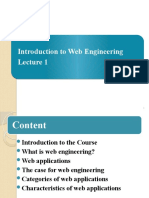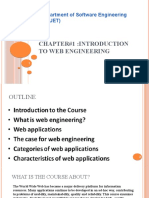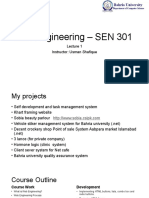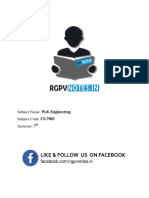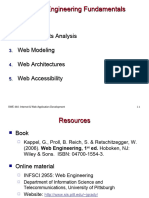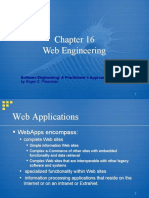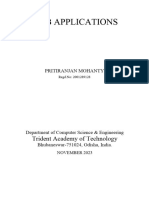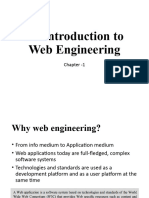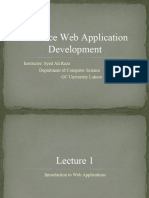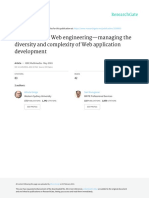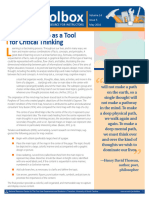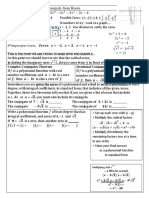0% found this document useful (0 votes)
68 views32 pagesLect 1 (Introduction To Web Engineering)
This document provides an introduction to the course "Web Engineering". It discusses the following key points:
1) The course aims to introduce methods and techniques for developing web-based applications and practical web development.
2) Web engineering applies software engineering principles to the development of high-quality web applications. It involves requirements engineering, modeling, architectures, technologies, testing, and maintenance.
3) Web applications utilize W3C standards to deliver web resources through browsers. They combine technology and user interaction.
Uploaded by
ASIMCopyright
© © All Rights Reserved
We take content rights seriously. If you suspect this is your content, claim it here.
Available Formats
Download as PPTX, PDF, TXT or read online on Scribd
0% found this document useful (0 votes)
68 views32 pagesLect 1 (Introduction To Web Engineering)
This document provides an introduction to the course "Web Engineering". It discusses the following key points:
1) The course aims to introduce methods and techniques for developing web-based applications and practical web development.
2) Web engineering applies software engineering principles to the development of high-quality web applications. It involves requirements engineering, modeling, architectures, technologies, testing, and maintenance.
3) Web applications utilize W3C standards to deliver web resources through browsers. They combine technology and user interaction.
Uploaded by
ASIMCopyright
© © All Rights Reserved
We take content rights seriously. If you suspect this is your content, claim it here.
Available Formats
Download as PPTX, PDF, TXT or read online on Scribd
/ 32

